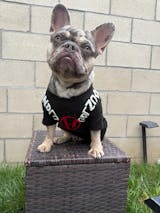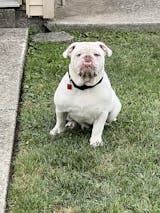Why Does My Dog Have Tear Stains?

Why does my dog have tear stains? You may look and stare at your dog and think, why does my dog have tear stains? Are they unhappy? But then you remember your dog is pampered more than you are and how could that be possible for such a spoiled pup.
Well, there are actually many reasons why your lovable pooch may show tear stains. Aside from some of the more obvious signs such as allergies, inability to fully close the eyes or teething puppies, there are many more natural or serious reasons that your doggo has some tear stains.
That’s why we are here to provide you with an ultimate doggy know-how for tear stains and how to remove them.
Without further ado; dogs have three eyelids. One of which has the job of spreading a ‘precorneal’ layer across the eye to protect against bacteria. Too much precorneal fluid is what causes a build-up and – you guessed it – the dog tear stains.
However, there are a few different causes for this build-up:
There are certain breeds of pup that are simply more susceptible to excess precorneal fluid build-up. Often they tend to be brachycephalic dog. Brachycephalic dogs are those that tend to have shortened snouts, restricted airflow and shallow eye sockets.
With shallow eye sockets, some dogs struggle to fully close their eyelids (this will be obvious if they sleep with their eyes slightly open) meaning they have to produce extra precorneal fluid to compensate.
Here’s some brachycephalic breeds that are susceptible to dog tear stains:
- Shih-Tzu
- Pug
- Maltese
- Pekingese
- Lhasa Apso
- Chihuahua
- Chow Chow
- Bull Mastiff
- Boxers
- Bulldogs
- Cavalier King Charles Spaniel
- Boston Terrier
It’s that time of the year again; allergy season…
It turns out that we aren’t the only ones affected by the dreaded return of Spring.
So, if you see your furry friend only suffering with tear stains at certain times of the year, then it’s most likely linked to hay fever.
While dogs can’t have human antihistamines, there are some snort-friendly remedies that are available through your vet.
However, they don’t always work wonders for your pup. Therefore, we suggest using Squishface Wrinkle Paste for all other breeds, and ear cleaners for every area your dog may be affected.
A change in diet will affect everyone differently
There’s the good, the bad, and the ugly when it comes to introducing new foods or diets. And the same can be applied to dogs, too.
Often, it is the case that poor quality foods with chemical additives can cause a waste imbalance in your pooch’s pooch. The same accounts for over-feeding (even with high-quality and organic dog food).
That’s why it’s important to make sure the dog food you are providing to your pet has the nutrient-rich supplements it needs to remain healthy.
Even if you are feeding your pup a healthy diet of expensive grub (and love, of course), there’s a chance that a food allergy or intolerance may be causing the dog tear stains.
So, to be sure, we suggest speaking with your vet to see which foods they recommend or to find out if your dog may have an underlying food allergy!
Then, make sure you get your hands on some Squishface products to help with the current tear stain clean-up.
They could have common epiphora!
Here’s a little nugget of biology: epiphora is an overflow – or over production – of the precorneal fluid we mentioned earlier.
It is commonly associated with inadequate drainage of the fluid, so it simply runs out of the tear duct and down the face.
The usual signs of this would be the tear dog stains forming as a reddish-brown color or ‘rusting’ down the face. There may also be a slight odor and infection because the precorneal layer is designed to catch bacteria to prevent entering the system. But, where the layer is incorrectly drained, it can lead to a skin irritation or infection
While this may be a common part of your dog’s life, there are also times when epiphora is a symptom of a breed, allergy, food intolerance or infection.
So, be sure to schedule a check-in with your vet to make sure that there’s no unwanted side effects of your dog’s epiphora.
Everyone has teething issues at some point…
When a puppy is teething, they will most likely produce excess tears – or precorneal fluid – to account for the fever and swollen gums.
To know if this is the case, you may see some blood on your pups’ favorite toys. But, there’s no need to panic as this is a sign of healthy tooth growth.
To combat this, offer some frozen treats. This will reduce pain, swelling, bleeding and tear stains!
However, if your pup continues to have excess precorneal fluid and dog tear stains after teething has stopped pop over to your vet for a quick check-up! Otherwise, the fluid flow should significantly reduce and you’ll be able to start the course of Squishface products to remove the stains.
Unfortunately, it could be the sign of an infection!
We have mentioned this already, but it’s a serious prospect for dog tear stains as it could signal something worse than diet, teething or epiphora.
Often, owners will mistake dog tear stains for something normal and avoid the vet by simply accepting the new norm. However, sometimes what may look like simple epiphora or excess fluid is actually discharge, pus or bacteria.
Not only this, but it is commonly unobserved in dogs with darker coats. Meaning that people often forget or believe that it is only an issue for dogs with lighter coats.
Luckily, here at Squishface, we have our specially-formulated Wrinkle Paste.
Made in the US with natural ingredients and minerals such as zinc oxide, shea butter, coconut oil and avocado oil, your pup will have a gleaming and shiny coat in no time.
Squishface Pastes are antibacterial and anti-fungal and can be used around the eyes to clean up stains while helping to prevent the re-occurrence of fungal or bacterial infections. Not only this, but the zinc oxide forms a naturally water-repellent barrier so there’s no need to reapply after a splash in that puddle. The puddle you specifically said ‘no’ to in your stern puppy voice.
It couldn’t be more simple to use; simply wipe the area with the Squishface Wrinkle Wipe and apply a pea-sized amount under each eye. Rub into the area to make sure it is working its magic on the skin as well as the coat. Wipe away the excess and leave for 24-hours. Repeat tomorrow and keep going for about 7 to 10 days or until the stains are completely gone.










